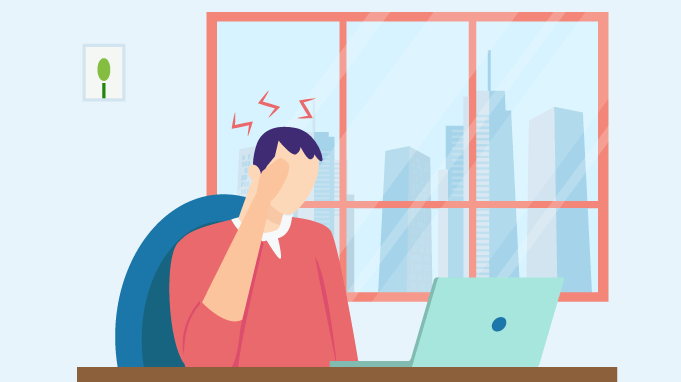Have you ever worked in an office environment where you experienced headaches, fatigue, or lethargy? To get to the root cause of many of these symptoms, we need to talk about Sick Building Syndrome.
As defined by the Environmental Protection Agency, Sick building syndrome is when building occupants experience acute health and comfort effects. These appear to be linked to time spent in a building, but you cannot identify a specific illness or cause. Sometimes the complaints of illness are localized to one room or floor in the building. Other times the entire building can be affected, no matter how large or small. Usually, soon after leaving the building, people who are having symptoms experience relief.
Symptoms that are indicators of Sick Building Syndrome may include:
- headaches
- eye, nose, or throat irritation
- dry cough
- dizziness
- nausea
- very dry or itchy skin
- fatigue
- diarrhea
- body aches
- fever
- chills
What causes Sick Building Syndrome and many of the symptoms noted above? There are many different reasons that a building may experience SBS. The specific cause, many times, cannot be identified. There are a variety of causes that contribute to SBS. One of the most common reasons is poor ventilation, which leads to poor indoor air quality. Heating and cooling units that have poor circulation are not able to clean the airy. Having an HVAC system functioning well is essential. It has to do with how well the system is installed, managed, cleaned, and operated.
Another thing that causes Sick Building Syndrome is chemical contaminants from indoor sources. Indoor air pollution many times come from the everyday building items that are inside. Carpeting, adhesives, upholstery, manufactured wood, and asbestos can all contribute to indoor air pollution. In addition to building materials, everyday office and cleaning supplies emit Volatile Organic Compounds. VOCs can affect indoor air quality. Copy machines, printers, air fresheners, and many different cleaning products used in commercial settings add VOCs to the air inside buildings. Environmental tobacco smoke contributes to high levels of VOCs and other toxic compounds. This can also add to the causes of Sick Building Syndrome. Research shows that some VOCs can cause chronic and acute health effects at high concentrations.
Many external sources of pollution can contribute to Sick Building Syndrome. Car exhaust fumes and other industrial pollutants can add to poor indoor air quality. Buildings are designed to be airtight. But there may be non-intended openings where exterior pollutants are entering. They may include open windows, deterioration of construction materials causing leaks, or poor initial design of the building. Once external contaminants are inside the building, they can add to Sick Building Syndrome issues and poor air quality.
If you are experiencing Sick Building Syndrome in your office or business setting, there are many avenues you can explore to remedy the problem. You may have to use a combination of tactics as well to solve the issue.
First, removing the source of any indoor pollutants that are identifiable. Replacing any materials or ceiling tiles indoors where there is mold or water damage is a great start. Correct storage of paints, adhesives, pesticides, strong cleaners, and solvents should happen. Storage should be in places away from office space and in a well-ventilated area. Choosing everyday cleaning products that do not have strong scents and are less toxic can help with indoor air quality. Also, using cleaning products while the building is empty of occupants is a good idea.
Another item that will help with Sick Building Syndrome includes routine maintenance of your HVAC systems. It would be best if you regularly had the system cleaned. This includes replacing filters, cleaning the condenser or heat pump, cleaning the drain lines, and cleaning out any vents that appear dirty or clogged. Allowing the HVAC system to circulate and clean air inside a building efficiently will be a line of defense against SBS.
When lowering outdoor contaminants, the building or business owner should not allow smoking on the property. Choose a smoking area, if needed, away from areas where smoke could enter the building. Checking window and door seals or other cracks where exterior pollutants can enter the building is essential. Seal or fix them as needed to keep the interior of the building free from as many outdoor pollutants as possible.
When identifying and treating Sick Building Syndrome, many factors go into the process. SBS can affect any building, business, or workplace regardless of location or usage. There is no set of specifications to use to identify SBS either in the symptoms or the effects. There is a combination of factors present within the building for occupants to experience symptoms.
In working or business environments, the owner and employer have a duty of care. This is to maintain a healthy and safe environment for the employees or patrons. Employers and business owners should be alert to factors that may lead to SBS. If they see issues arising, they should remedy them immediately.


